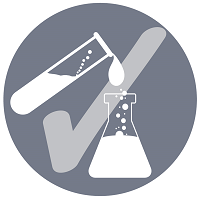Formulation and Delivery
Rapid Fires: Patient-Centric Formulation and Personalized Drug Delivery Strategies 1
Non-Invasive Intranasal Gels for Brain Delivery in Neurodegenerative Disorders
Monday, November 10, 2025
3:30 PM - 3:45 PM CT
Location: Stars at Night B1

Vivek Gupta, PhD, FAAPS
Associate Professor
St. John's University
Queens, New York
Rapid Fire Speaker(s)
Treating brain disorders, particularly neurodegenerative diseases, is hindered by the blood-brain barrier (BBB), which limits drug delivery. Nose-to-brain delivery offers a non-invasive route that bypasses the BBB, with intranasal gels emerging as a promising strategy. These gels enhance drug localization and brain permeation while improving bioavailability by avoiding first-pass metabolism. However, mucociliary clearance poses a challenge by removing formulations from the nasal cavity too quickly. In-situ nasal gels, formulated with mucoadhesive and thermoresponsive agents like chitosan, poloxamer, and gellan gum, address this by increasing nasal residence time and enhancing brain uptake. This session will explore the mechanisms, formulation techniques, and structural properties of these gels. Case studies involving nanoemulsion and PLGA nanoparticle-loaded gels will be discussed, supported by in-vitro and preclinical data. Overall, intranasal in-situ gels represent a transformative approach for brain-targeted drug delivery, with the potential to improve treatment outcomes in neurodegenerative and other central nervous system disorders.
Learning Objectives:
- Learn the challenges of traditional brain drug delivery and how intranasal delivery can overcome them
- Understand how intranasal gels work to improve drug delivery to the brain
- Explore how nanotechnology enhances the effectiveness of intranasal gel formulations.


